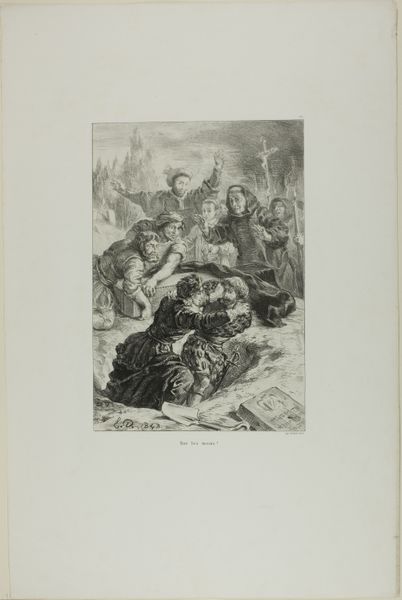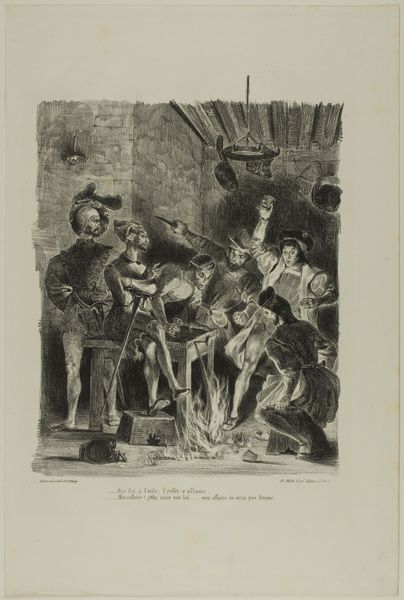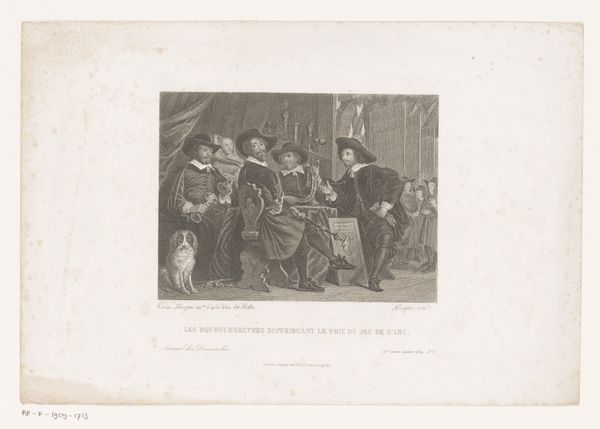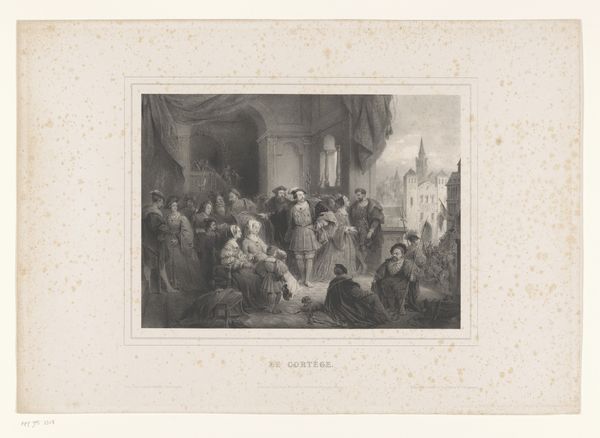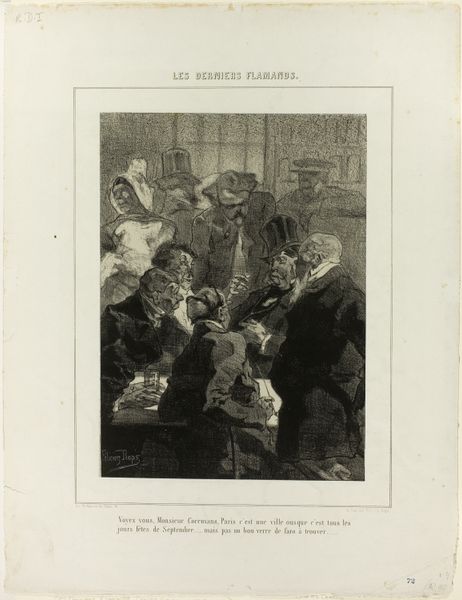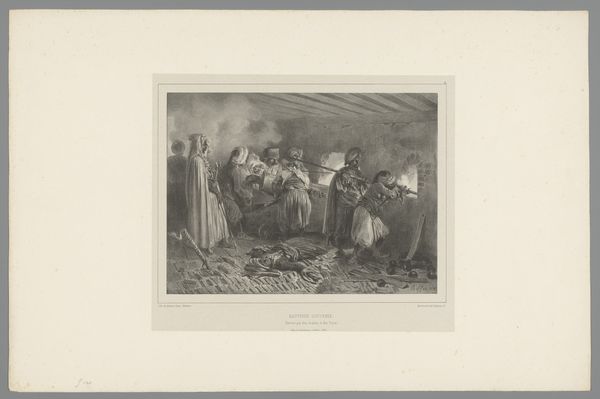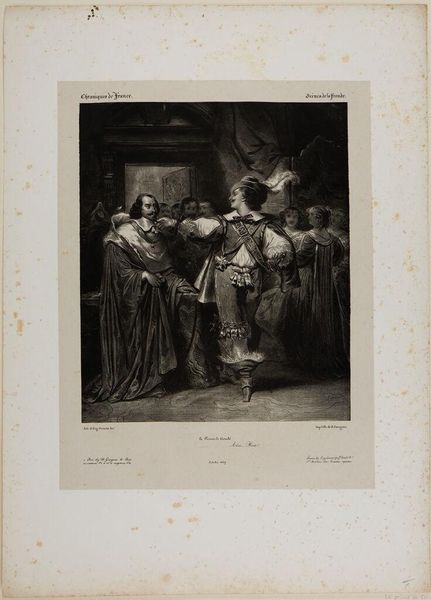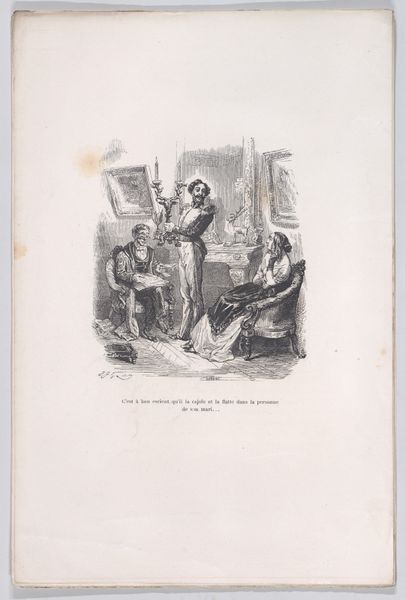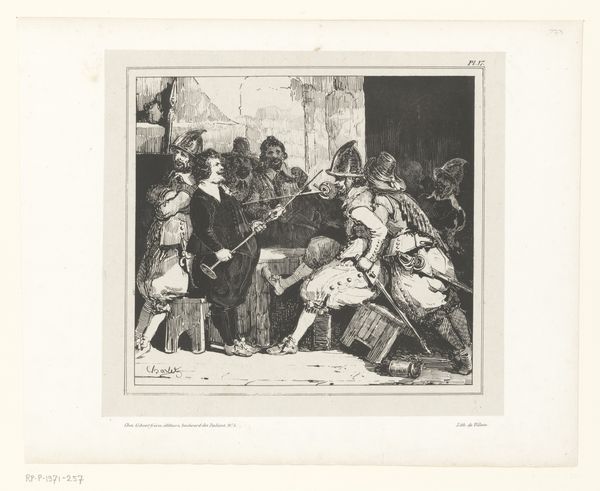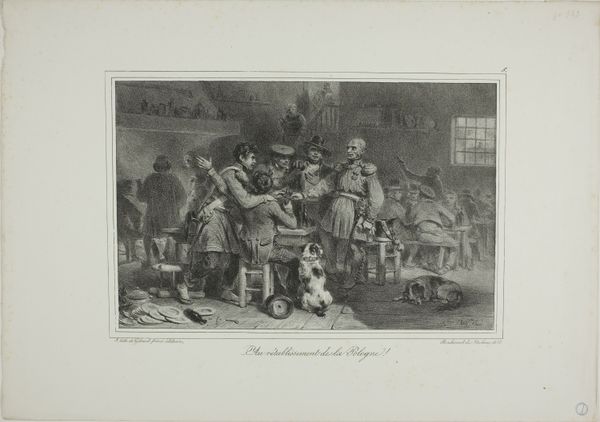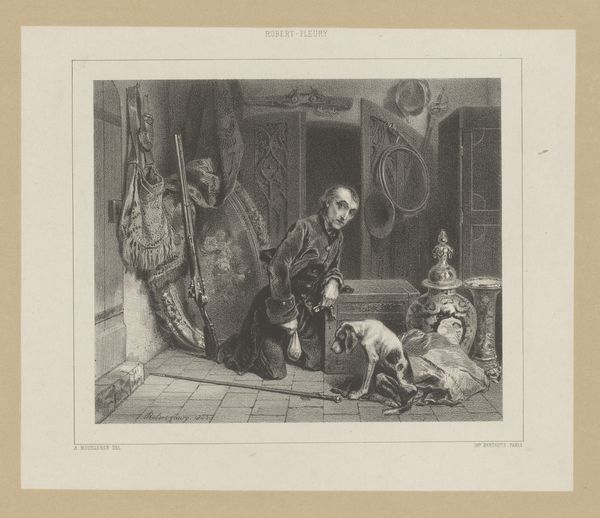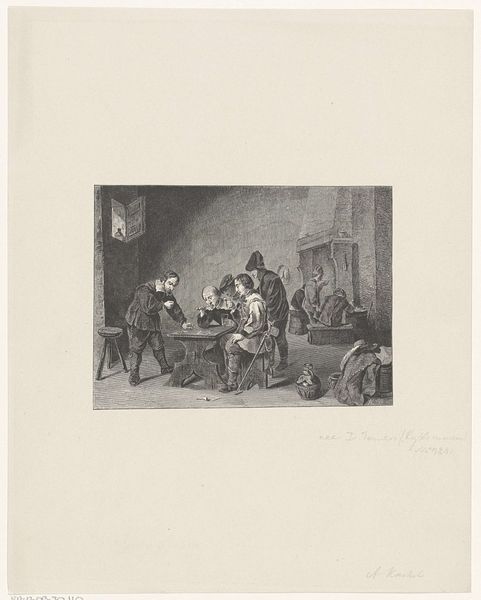
drawing, lithograph, print, paper
#
portrait
#
drawing
#
narrative-art
#
lithograph
# print
#
figuration
#
paper
#
romanticism
#
france
#
genre-painting
Dimensions: 181 × 206 mm (image); 285 × 397 mm (sheet)
Copyright: Public Domain
Curator: This lithograph, "Faithful as a Polish Man!", was created in 1833 by the French artist Auguste Raffet. It's currently held in the collection of the Art Institute of Chicago. Editor: The immediate feeling I get is of slightly chaotic revelry, a sense of slightly tipsy enjoyment amongst a larger gathering. I am intrigued by all the details! Curator: Raffet created this print during a period of intense political upheaval in Europe, particularly in Poland. The failed November Uprising against Russia casts a long shadow here, intertwining with notions of national identity and political betrayal. Editor: It's fascinating how that context can inform the reading of symbols. The central figure in uniform—a man identified as Polish, placed his hand in gesture on his heart. I wonder about the weight and meanings that national costumes carried in the 19th Century? Curator: Exactly! And it pushes us to examine what it means to pledge loyalty in the face of oppression and shifting national allegiances. The artwork’s title itself acts almost like a pointed question. Where does fidelity lie, when national borders are fluid and political winds change so dramatically? Editor: This piece really evokes a feeling of cultural memory – the faces in the crowd seem to be witnesses to the moment but the children at the top almost look like past generation onlookers. The hat and outfit of the women seem intentional and may carry the emotional context of that period in time, wouldn't you say? Curator: Undoubtedly! By alluding to political issues through subtle figurative representation, it makes a powerful commentary about the universal challenges of faith and nationhood in times of turmoil. Editor: Considering those political circumstances, it is fascinating how artists communicated the nuances of a period through imagery. Now looking back at this artwork through history, we get the context and are moved emotionally by the imagery that lives on to tell a story. Curator: I'm struck by how effectively Raffet captures these intersecting historical, political, and deeply personal dimensions within a single frame. Editor: Indeed, a seemingly simple scene now vibrates with all that complex meaning. It's a great reminder of the power of visual symbols!
Comments
No comments
Be the first to comment and join the conversation on the ultimate creative platform.
